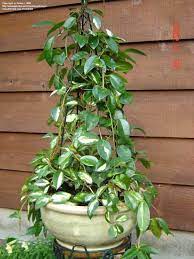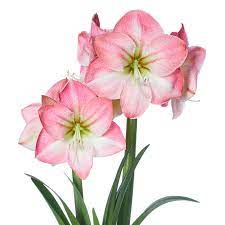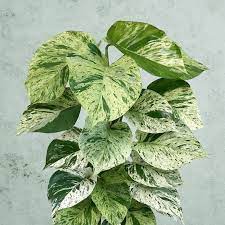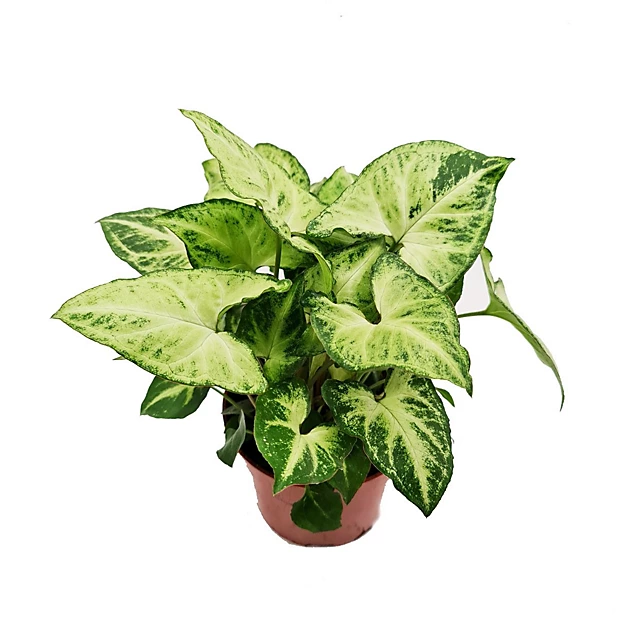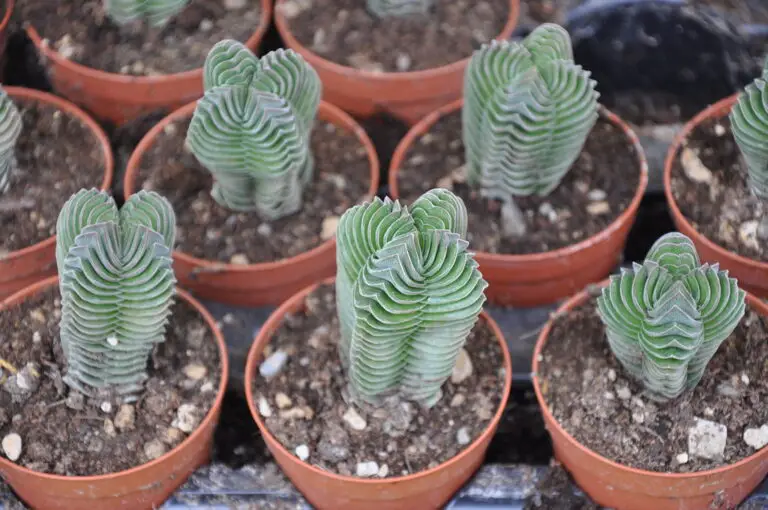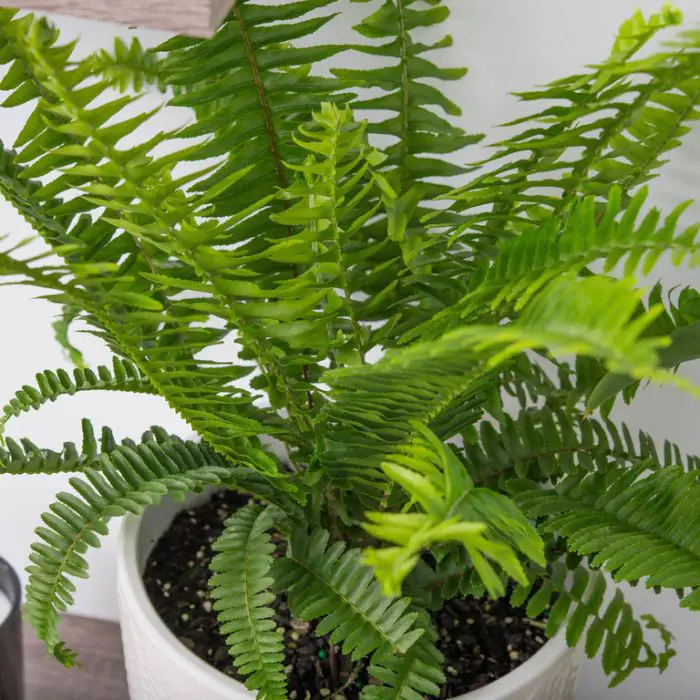Introduction:
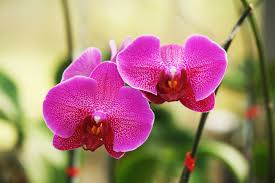
Discovering your orchids afflicted with common problems can be disheartening, but fear not – you’re not alone in this journey. In the world of orchid care, encountering issues is almost inevitable. Whether it’s drooping leaves, bud blasts, or mysterious spots, these challenges can be navigated with a bit of know-how.
In this concise guide, we’ll delve into the most prevalent orchid problems and arm you with practical solutions. Drawing from real-life experiences, we’ll guide you through the intricacies of addressing foliage concerns, flower-related issues, and even pest management. Clean tools, clean pots, and a dash of common sense will be your allies.
Let’s embark on a journey to unravel the secrets of common orchid problems and equip you with the tools needed to nurture thriving orchids. Ready to transform those setbacks into successes? Let’s dive in!
2. Foliage Issues:
Drooping Leaves: One of the most common visual cues of orchid distress is drooping leaves. This issue may arise from overwatering, underwatering, or even a problem with the orchid’s root system. To address this, carefully inspect the roots, adjust your watering routine, and consider repotting if necessary.
Leaf Tip Die-Back: When you notice the tips of your orchid’s leaves turning brown and crispy, you’re dealing with leaf tip die-back. This can be attributed to factors like low humidity or over-fertilization. Trim affected areas, adjust environmental conditions, and be mindful of fertilization levels to prevent further die-back.
“Accordion Pleating” Look to Foliage: If your orchid’s leaves exhibit a peculiar “accordion pleating” appearance, it could be a sign of stress. This stress may result from temperature fluctuations or inadequate watering. Ensure consistent environmental conditions, particularly temperature, and maintain a balanced watering routine to restore your orchid’s leaf health.
Addressing foliage issues is crucial for the overall well-being of your orchids. By identifying and remedying problems like drooping leaves, leaf tip die-back, and unusual pleating, you’ll contribute to the long-term vitality of your orchid collection. Stay tuned for insights into flower problems and root concerns in the next sections!

3. Flower Problems:
Bud Blast: Witnessing the premature dropping of buds, known as bud blast, can be disheartening. This phenomenon often results from sudden environmental changes, drafts, or improper watering. Shield your orchids from temperature fluctuations, ensure proper hydration, and secure a stable environment to prevent the dreaded bud blast.
Spots on Flowers (Botrytis): The appearance of spots on your orchid’s flowers, often caused by Botrytis, demands swift action. This fungal infection thrives in humid conditions. To combat it, improve air circulation around your orchids, maintain lower humidity levels, and consider anti-fungal treatments. This proactive approach will preserve the aesthetic appeal of your orchid blooms.
While orchid flowers are a delight, encountering issues like bud blasts or spots can be discouraging. By understanding these problems and implementing effective solutions, you’ll foster an environment where your orchids can flourish. Next, let’s explore root and bulb concerns that might be lurking beneath the surface of your orchid’s beauty.
5 Beautiful Varieties Of Orchid
4. Root and Bulb Concerns:
Crown and Collar Rot: Crown and collar rot can wreak havoc on an orchid’s health, leading to wilting and discoloration. This condition often arises from overwatering or poor drainage, creating a breeding ground for fungal pathogens. To combat this, ensure well-draining potting mix, avoid overwatering, and consider repotting if the roots show signs of rot.
Bulb Rot: A bulbous base is a characteristic feature of many orchids, and when rot sets in, it can be alarming. Overwatering is a common culprit. To prevent bulb rot, allow the potting mix to dry between watering, provide adequate ventilation, and inspect bulbs regularly. Swift action can save your orchid from the clutches of this destructive issue.
Understanding and addressing root and bulb concerns is pivotal for the longevity of your orchids. By maintaining a careful balance in watering practices and ensuring proper aeration, you’ll create an environment that wards off rot and promotes the well-being of your orchid’s root system. Stay tuned as we delve into effective pest management in the next section.
5. Pest Management:
Overview of Orchid Pests: Orchids, like any other plants, are susceptible to pests that can compromise their health. Common invaders include mealy bugs, scale, aphids, thrips, and slugs/snails. Vigilance is key to preventing these pests from establishing a foothold in your orchid collection.
Mealy Bug: Mealy bugs are small, cotton-like insects that feed on sap. To combat them, isolate the infected orchid, remove visible bugs with a cotton swab dipped in alcohol, and consider applying insecticidal soap for persistent infestations.
Scale: Scale insects attach themselves to orchid surfaces, sucking sap and causing damage. Manual removal with a soft brush or cotton swab is effective. Additionally, introducing natural predators like ladybugs can help control scale populations.
Aphids: Aphids are tiny, sap-sucking pests that can quickly multiply. Rinse them off with a gentle stream of water or use insecticidal soap. Regular inspection is crucial for early detection and prevention of widespread infestations.
Thrips: Thrips are slender insects that can cause discoloration and distorted growth. Introduce beneficial insects like predatory mites or use neem oil to control thrip populations.
Slugs/Snails: These pests can damage orchid leaves and flowers. Handpicking, especially during the evening when slugs and snails are active, is an effective method. Creating physical barriers like copper tape can also deter them.
Effective pest management is integral to orchid care. Regularly inspect your orchids for signs of pests, and implement timely interventions to protect your plants from potential threats. Stay tuned as we explore other common orchid ailments and their solutions in the following sections.

6. Other Orchid Ailments:
Dealing With Uncommon Issues: While we’ve covered common orchid problems, it’s essential to be prepared for the unexpected. Orchids may face less frequent but equally challenging ailments. These could range from specific diseases to environmental stressors. Identifying and addressing these issues promptly is crucial for maintaining a healthy orchid collection.
Environmental Challenges: Orchids are sensitive to changes in their surroundings. Factors like sudden temperature drops, drafts, or extreme humidity levels can stress your orchids. Regularly monitor the environment, provide stable conditions, and shield your plants from drastic changes to mitigate these challenges.
Problems Growing Orchids: Issues related to the growth and development of orchids can vary. From stunted growth to lack of flowering, understanding the unique needs of each orchid species is vital. Ensure proper fertilization, appropriate potting media, and adequate light to support optimal growth.
Troubleshooting with Orchids at Home: At times, your orchids may exhibit signs of distress without clear explanations. Troubleshooting involves a systematic approach to identify the root cause. Assess factors such as light, water, and nutrient levels, making adjustments as needed to restore your orchid’s health.
Houseplant Rule Number One: Adhering to fundamental houseplant care principles is key to orchid health. Proper watering, balanced fertilization, and suitable light conditions are universal rules that contribute to the well-being of your orchids. Following these basics establishes a foundation for success in orchid care.
Addressing less common orchid ailments and navigating environmental challenges requires a keen eye and proactive care. Stay attentive to your orchids’ unique needs, and you’ll be well-equipped to handle any unexpected issues that may arise. In the following sections, we’ll delve into specific questions related to orchid care, including reblooming, lighting, and leaf discoloration.
7. Environmental Challenges:
Problems Growing Orchids: Successful orchid care hinges on understanding and addressing various environmental challenges. When growing orchids, it’s crucial to be attuned to their specific needs. Common problems include stunted growth, lack of flowering, or yellowing leaves. By tailoring care to the unique requirements of each orchid species, you can overcome growth-related challenges.
Troubleshooting with Orchids at Home: Orchids sometimes exhibit signs of distress without apparent causes. Troubleshooting involves a systematic approach to identify and rectify the root cause. Evaluate factors such as light intensity, watering frequency, and nutrient levels. Adjustments made based on your observations will contribute to restoring your orchid’s vitality.
Houseplant Rule Number One: The foundational rule for all houseplants, including orchids, is proper watering. Overwatering can lead to root rot, while underwatering causes dehydration. Strike a balance by allowing the potting mix to partially dry between watering sessions. This rule, combined with suitable light and regular fertilization, forms the cornerstone of successful orchid care.
Reblooming and Lighting: Understanding the factors influencing orchid reblooming is essential. Adequate lighting plays a pivotal role in triggering the flowering process. Ensure your orchids receive the right amount of light, either natural or supplemental, depending on their species. Observing their response to light adjustments will guide you in optimizing conditions for reblooming.
Leaf Discoloration: Yellow or brown leaves can signal underlying issues. Yellowing may result from overwatering, while brown tips may indicate dry air or excessive fertilizer. Evaluate your orchid’s environment, adjust watering practices, and maintain optimal humidity levels to address leaf discoloration effectively.
Navigating environmental challenges in orchid care requires a balance of diligence and adaptability. By troubleshooting issues, adhering to houseplant care fundamentals, and optimizing lighting conditions, you’ll create an environment conducive to the well-being of your orchids. In the following sections, we’ll tackle specific queries related to orchid care, including pest management and disease prevention.
8. Reblooming and Lighting:
How to Encourage Orchid Reblooming: Witnessing your orchid’s vibrant blooms is a gratifying experience, and encouraging reblooming involves understanding the factors that trigger this process. Orchids typically need a rest period after flowering, during which they focus on vegetative growth. Providing the right conditions, such as stable temperatures and proper nutrition during this phase, sets the stage for a successful reblooming cycle.
Ensuring Adequate Light: Light is a critical factor influencing the flowering of orchids. Most orchids thrive in bright, indirect light, mimicking their natural habitat. Assess your orchid’s species to determine its light requirements. For example, Phalaenopsis orchids prefer lower light levels, while Cattleyas thrive in brighter conditions. Adjust the placement of your orchids to ensure they receive the appropriate amount of light for optimal growth and flowering.
Supplemental Lighting Methods: In environments where natural light is insufficient, supplemental lighting becomes invaluable. LED grow lights are popular choices for providing the specific wavelengths of light that orchids require for photosynthesis and blooming. When using supplemental lighting, position the lights at the correct distance and duration to mimic the natural day-night cycle, promoting healthy growth and encouraging reblooming.
By understanding the nuances of orchid reblooming and optimizing lighting conditions, you’ll enhance the likelihood of vibrant, recurring blooms. Tailoring your care approach to the specific needs of each orchid species and incorporating supplemental lighting when necessary will contribute to a flourishing orchid collection. Stay tuned as we explore common leaf-related concerns in the next section.
9. Leaf Discoloration:
Dealing with Yellow Leaves: Yellowing leaves are a common concern for orchid enthusiasts and can indicate various issues. Overwatering is a frequent culprit, leading to root rot and subsequent yellowing. To address this, adjust your watering routine, ensuring the potting mix partially dries between sessions. Additionally, inspect the roots for signs of rot, and if necessary, consider repotting into a well-draining mix.
Addressing Brown Tips on Leaves: Brown tips on orchid leaves are often a result of environmental factors. Dry air, low humidity, or excessive fertilization can contribute to this issue. Increase humidity around your orchids by placing a tray of water nearby, and maintain a consistent fertilization schedule with a balanced orchid fertilizer. Trimming the browned tips can enhance the overall appearance of your orchid.
Wrinkled Orchid Leaves: Wrinkled leaves may indicate dehydration or insufficient water uptake. Ensure that your orchid receives adequate water, especially during its active growing season. If the wrinkling persists despite proper hydration, assess the root system for any anomalies. Healthy roots contribute to turgid leaves, and addressing root issues can restore your orchid’s leaf health.
Understanding and addressing leaf discoloration is crucial for maintaining the visual appeal and overall health of your orchids. By pinpointing the causes of yellowing, brown tips, and wrinkling, you can implement targeted solutions to rejuvenate your orchid’s foliage. Stay tuned as we explore specific questions related to orchid pests and their management in the following section.
10. Pest Management:
Overview of Orchid Pests: Orchids, like all plants, are susceptible to a range of pests that can compromise their health. Understanding the common invaders is essential for effective pest management. Mealy bugs, scale, aphids, thrips, and slugs/snails are frequent culprits that can quickly multiply and damage your orchids.
Mealy Bug: Identifying mealy bugs early is crucial for preventing widespread infestations. These small, cotton-like insects feed on sap, leading to wilting and stunted growth. To combat mealy bugs, isolate the affected orchid, manually remove visible bugs with a cotton swab dipped in alcohol, and consider applying insecticidal soap for persistent infestations.
Scale: Scale insects attach themselves to orchid surfaces, causing damage by sucking sap. Manual removal using a soft brush or cotton swab is effective, especially for smaller infestations. Introducing natural predators like ladybugs can also help control scale populations.
Aphids: Aphids, tiny sap-sucking pests, can quickly multiply and cause damage to orchid leaves and stems. Rinse them off with a gentle stream of water or use insecticidal soap for more severe infestations. Regular inspections are crucial for early detection and prevention.
Thrips: Slender thrips can cause discoloration and distorted growth in orchids. Introduce beneficial insects like predatory mites or use neem oil to control thrip populations. Maintaining a clean growing environment is essential to prevent thrips from proliferating.
Slugs/Snails: These pests can leave unsightly damage on orchid leaves and flowers. Handpicking is an effective method, especially during the evening when slugs and snails are active. Creating physical barriers, such as copper tape, can also deter these pests.
Effective pest management involves vigilance, early detection, and timely intervention. Regularly inspect your orchids for signs of pests, and implement appropriate measures to keep these invaders at bay. In the following sections, we’ll explore specific diseases that can affect orchids and strategies for their prevention and treatment.
11. Orchid Diseases:
Overview of Orchid Diseases: While orchids are resilient plants, they can fall prey to various diseases. Identifying these diseases early on is crucial for preventing the spread and ensuring the overall health of your orchids. Common diseases include fungal infections, bacterial rots, and viral issues, each requiring specific measures for effective management.
Fungal Infections: Fungal infections, such as Botrytis, can manifest as spots on flowers or affect leaves and stems. To combat fungal issues, improve air circulation around your orchids, maintain lower humidity levels, and consider applying fungicides designed for orchids. Proper watering practices that avoid water accumulation on leaves also play a preventive role.
Bacterial Rots: Crown and collar rot are examples of bacterial rots that can affect orchids. These often result from overwatering or poor drainage. To address bacterial rots, ensure well-draining potting mix, avoid overwatering, and consider repotting if signs of rot are present. Additionally, applying a copper-based fungicide can help control bacterial infections.
Viral Issues: Viruses in orchids can cause various symptoms, including mottled leaves, streaking, or distorted growth. Unfortunately, there’s no cure for viral infections, and infected plants should be isolated to prevent further spread. Proper hygiene practices, such as sterilizing cutting tools between plants, can aid in preventing viral diseases.
Preventing Orchid Diseases: Preventing orchid diseases involves maintaining optimal growing conditions and practicing good hygiene. Ensure proper ventilation to reduce humidity, use sterile potting mix, and avoid overwatering. Quarantine new orchids before introducing them to your collection to prevent the spread of potential diseases.
By understanding common orchid diseases and implementing preventive measures, you can safeguard your orchids from the threat of infections. Regularly inspect your plants for any signs of disease, and take prompt action to address issues before they escalate. In the next section, we’ll explore specific questions related to common orchid ailments and their solutions.
12. Troubleshooting Common Orchid Ailments:
Identifying and Addressing Common Issues: Troubleshooting common orchid ailments involves a systematic approach to identify problems and implement effective solutions. Begin by closely observing your orchids for any visible signs of distress, such as discoloration, wilting, or unusual growth patterns. Identifying the issue accurately is the first step towards a successful resolution.
The Most Common Orchid Pests in the UK: For orchid enthusiasts in the UK, understanding the prevalent pests is crucial for proactive pest management. Aphids, mealybugs, and scale insects are among the most common invaders. Regular inspections, early detection, and targeted interventions can help keep these pests under control and prevent extensive damage.
Aphids and Their Poo: Aphids, tiny sap-sucking insects, not only damage orchids directly but also leave behind a sticky deposit known as honeydew. This substance can attract sooty mold, further impacting plant health. To address aphids, rinse them off with water and keep an eye on honeydew accumulation to prevent secondary issues.
Boisduval Attacks on Cattleya and Control Measures: Boisduval, a common pest attacking Cattleya orchids, can be challenging to control. This pest is hard to detect and can cause significant damage. Implement preventive measures such as regular inspections, maintaining a clean growing environment, and considering biological controls to manage Boisduval infestations.
Mealybug Hiding Places and Control: Mealybugs not only infest orchid leaves but also hide in the compost, making them challenging to eliminate completely. To control mealybugs, isolate infected orchids, remove visible bugs with a cotton swab dipped in alcohol, and consider applying insecticidal soap. Regularly inspecting the growing medium helps catch hidden infestations.
Common Orchid Growing Problems and Solutions: Issues related to the overall growth and development of orchids can be multifaceted. From stunted growth to irregular flowering patterns, troubleshooting these problems involves a comprehensive assessment of environmental factors, potting mix quality, and nutrient levels. Tailoring your care approach to the specific needs of each orchid species is key to addressing growing problems effectively.
Conclusion:
Successfully navigating common orchid ailments requires a combination of keen observation, prompt action, and a tailored care approach. By understanding the unique challenges associated with pests, diseases, and growth issues, you’ll be well-equipped to foster a thriving orchid collection. Regular monitoring and proactive interventions will contribute to the long-term health and beauty of your orchids. Happy orchid growing!

